Today is a sad day. Today I will cut my last pair of Rad Pants into rags.
The die was cast a couple of weekends ago. I leaned over to check a culvert for debris, and heard a soft rrrip while my thighs suddenly felt breezy. One of the crotch seams in my last pair of Rad Pants let go. Ms. NWimby laughed out loud; I think I felt a tear on my cheek. I knew immediately that this may be the last blow for my old blue Rads. An era came to an end. There is no repairing this lost seam, the nylon is a decade old, and has been around the world. A few smaller patches and duct-taped tears were OK, manageable, if not fashionable. But this was a fatal wound.
Anyone who has known Mountain Equipment Co-op long enough that they refer to it as “the Co-op” or as “Em-E-See” (as opposed to the new generation that call it “Mek”, a sound that will always cause me to cringe) will remember the original Rad Pant. Most of you probably owned a pair, or at least can pick them out of a crowd.
Originally designed for climbing, the Rad Pant was one of those designs that came together so well that the produce created filled many niches, true multi-purpose field and travel pants. A simple pant, with tapered legs and loose around the hips. Elasticized waist with integrated waistband, elastic cuffs, slash pockets with a few accessory pockets. The material was a light nylon that found the perfect compromise between durability, breathability, and wicking. They weren’t waterproof, but they dried so quickly, they were great for hiking in mixed weather. They were also magic at keeping bugs off.
I did a couple of field seasons doing exploration geology in the Swannell Ranges – a part of north-central BC where mosquitoes, black flies, and deer flies remind you every day just where humans reside on the food chain. Cool mornings, warm afternoons, and almost daily thunderstorms make for wet muggy conditions, and when you are a geologist, you spend a lot of time up above treeline, walking ridges. Your presence scares off the marmots the grizzlies, the elk, and so you become the only meat available for the voracious little insect bastards. Any illusions one might have about avoiding DEET for heath reasons are forgotten in a day. Your hatline, back of the neck and the back of the hands will be raw flesh without it. We even had to apply it to the shoulders of our long-sleeve shirts, as persistent mosquitoes will puncture through cotton or poly weave (and deer flies will scissor through it) where it is pulled taut. However, the light nylon used for Rad Pants had a tight enough weave that mosquitoes couldn’t puncture it. And the gathered cuff and elastic waist kept the bugs from wiggling around the nylon.
They were so damn versatile: light enough to roll up and stick in the back pocket of your cycling jersey or in the bottom of a day pack, roomy enough to slip them on over shorts. Durable enough to sit on rocks all day, repairable with duct tape if needed, and kept the wind off without being too hot for tropical use. I’m going to miss them, and haven’t found a replacement.
I don’t even remember when I bought my first pair, but I do remember they were tan brown, and it must have been before I finished my undergrad in 1997, because there are pictures of me wearing them at field schools up in the mountains of central Vancouver Island, and travelling thought the Basin and Range of Nevada after my grad. I have pictures of me wearing Rad Pants while sampling volcanic gasses on the edge of the Hale’ma’u’ma’u crater, while kayaking in the Gulf Islands for my thesis work, and while visiting mountaintop temples in Thailand.
Now, my last pair is dead, and there won’t be any more. MEC stopped making them a few years ago. Inevitably, they couldn’t let the greatest product they ever made stand. They messed with the fit, put in a non-elastic waistband, changed the cut and colours. Soon, they didn’t fit so well anymore, people complained, and sales dropped off. Then, instead of going back to the formula that worked, MEC killed the line. They just weren’t fashionable enough for the new MEC, the one people call “Mek”.
So goodbye Rad Pants. What good times we had:
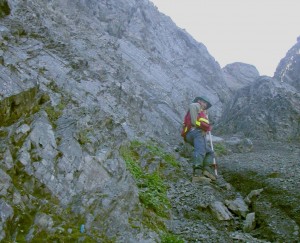 |
| Me and my Rads, somewhere in the Osilinka Range of Central BC. |
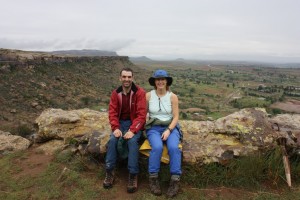 |
| Mr. And Ms. Rads, at Thaba Bosiu, the birthplace of the Basotho nation, and burial place of King Moeshoeshoe I. |
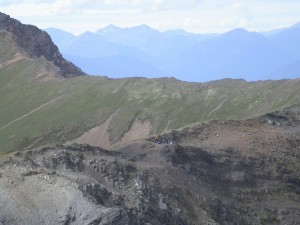 |
| That little speck in the middle is me, with my blue Rads, measuring sedimentary sections somewhere in the Bowser Basin in NW B.C. |
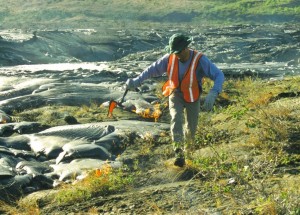 |
| My original tan Rads, (RIP 2010) not at all fireproof, but still adaptable to sampling liquid lava from Pu’u’O’o on Hawai’i. |
 |
| My Rads were breezy enough to keep me cool in the cloud forests of Costa Rica, while wicking off the moisture! Thanks Guys! |
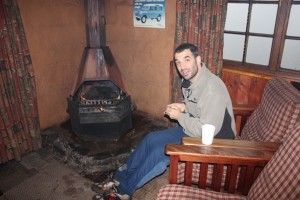 |
| Caught in a rainstorm during a hike? Head over to the fire and the Rads will dry off lickety-split. Here, at the Sani Pass Lodge on the Lesotho/South Africa border. |
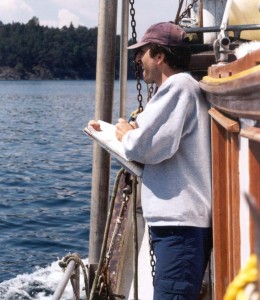 |
| Planning a beach attack on the Gulf Islands during my thesis work. |
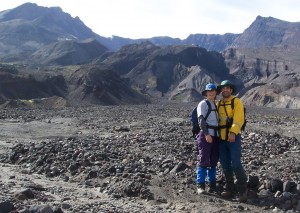 |
| With Ms.NWimby and her fetching Eggplant Rads, on the way into the crater of Mt. St. Helens. |
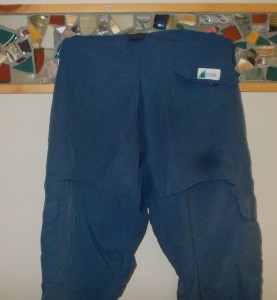
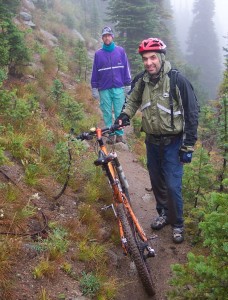
A lovely tribute. Funny, when I started hearing “Mek” is also roughly the time when the co-op started to apparently believe that women who had hips didn’t exercise, and absolutely nothing they offered fit me. Everything became third-party label and three times the price. They even stopped offering the underwear I liked for hiking. I rarely shop at the co-op now, except for semi-technical clothing for Kale and the odd camping piece that needs upgrade or replacement. it’s very disappointing.
They have risen from the dead!
https://www.mec.ca/en/product/5061-829/Rad-Pants
It’s a crying shame about the Rad pants because you really sold them to me and now I want ten! Bugger.
I’m based in the UK. I bought a pair in Toronto in about 1996 and they have been on treks and travels all over the place. You’re right, throw ’em on and live in them for days on end on extended backcountry trips.
Mine have given up now. Last week I must have tried 12 pairs of alternatives on (Patagonia, Haglofs, Montane, RAB etc. etc. and nothing felt as good. I’m off to the Caucasus (Georgia) in a couple of weeks and still looking.
Dave Porter
I don’t know how many pair of RAD pants I have owned over the last 30 years – quite a few – but my last pair is now beyond repair. I have used them for hiking, biking, climbing, canoeing, cross country skiing, building a house, and countless other activities. In my opinion they are the single best piece of clothing that I have ever purchased at MEC. The discontinuation of Serratus and the RAD pant sadly has signalled the downward spiral of MEC.
MEC – Redeem yourselves – bring back the RAD!!
How well I share your sentiments! I bought my first pair around ’93 or ’94. Same tan brown you described. A few years later I left Vancouver, but I ordered another pair (the second generation model by then) which I still wear today. Pair number 1 finally gave out not long ago. Very possible the single most long-lived, durable bit of gear I owned (along with my Patagonia Capilene Henley purchased a few years earlier and still going). We are in the high desert now, and the ‘newer’ fabric actually works a little better here. If they would bring them back, I’d order a pair and keep them on hand for when the present ones finally wear out.
I told pretty much this entire story to a friend today. Another friend had scored me a pair of rad pants from the Salvation Army. I was so excited to get home and put them on, only to find that it was the newer design. Very long and narrow crotch. No elastic in the waist, etc. I really do often think about how great a pair of rad pants would be for…insert any situation in my life. I used mine mostly for working in the bush as a forester. Tree planting, cruising, etc. Everything you say is true. Bug proof, quick drying, allows full range of motion, comfortable, versatile. Cargo pocket is perfect for a roll of flagging tape. Were they 100% nylon?
And Serratus. I had gauntlet mitts with built in fleece liners that were incredibly easy to pull out for drying. Totally waterproof, grippy palms, warm…
https://www.mec.ca/en/product/5061-829/Rad-Pants
https://www.mec.ca/en/product/5061-825/Rad-Pants
😉
THEY ARE BACK!!!
Rejoice!!!!
Did you manage to get a pair?
And they’re gone – at least for me. No, I did not manage to get any!
They’re back again! hurry!
Has anyone found a replacement for the MEC rad pants yet? I’m desperate to find a replacement! Thanks